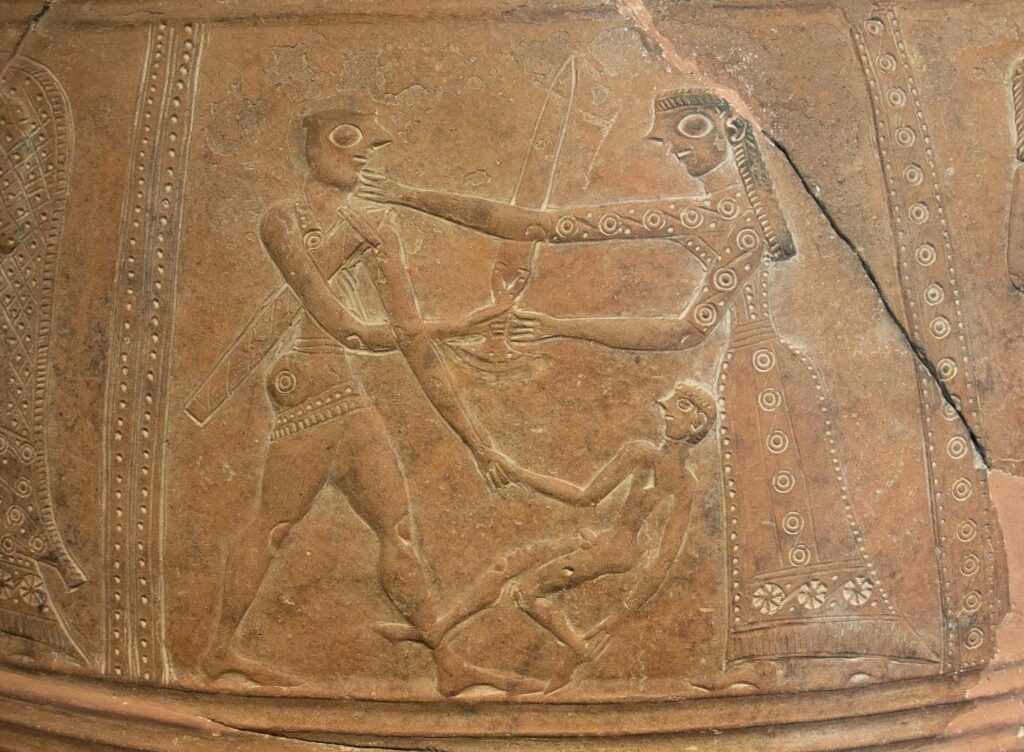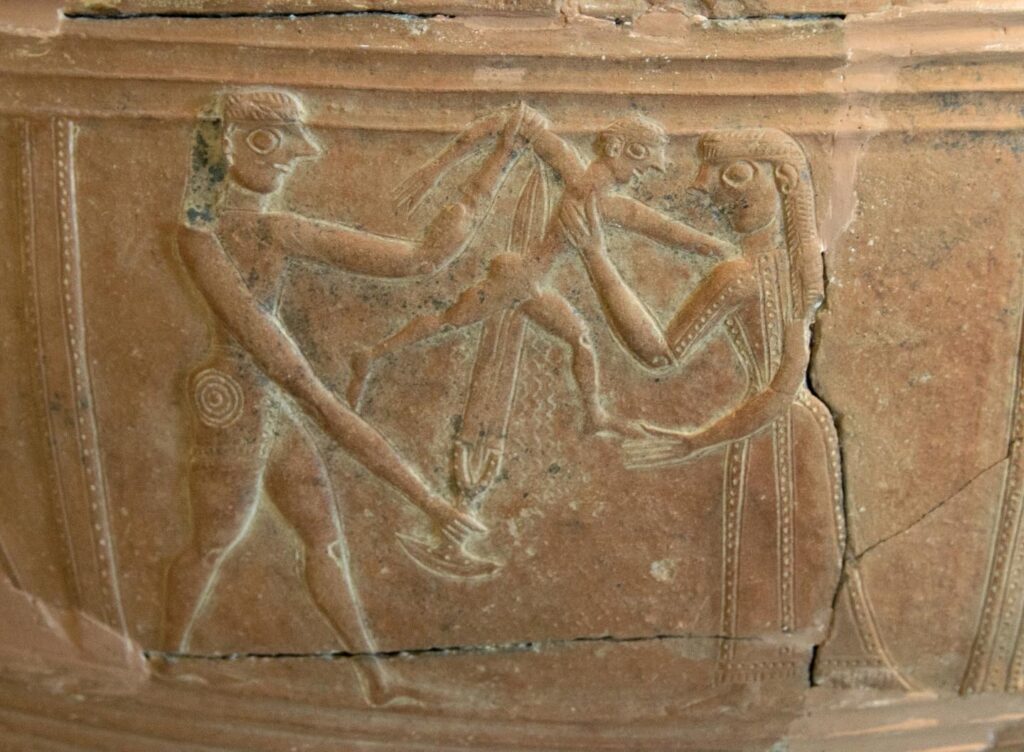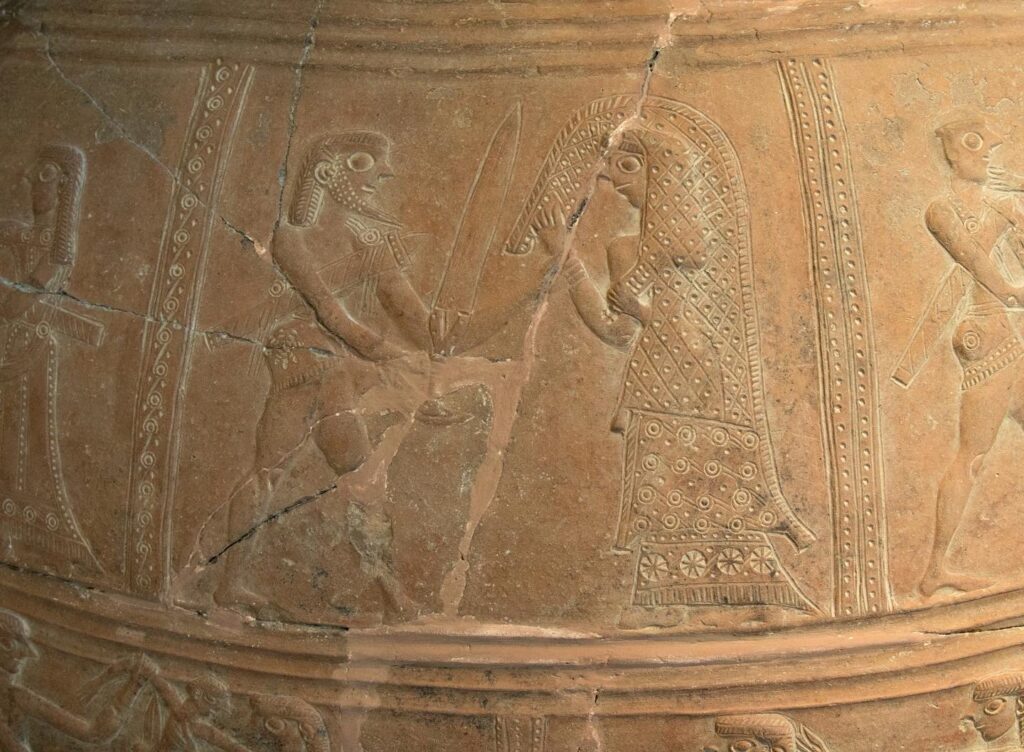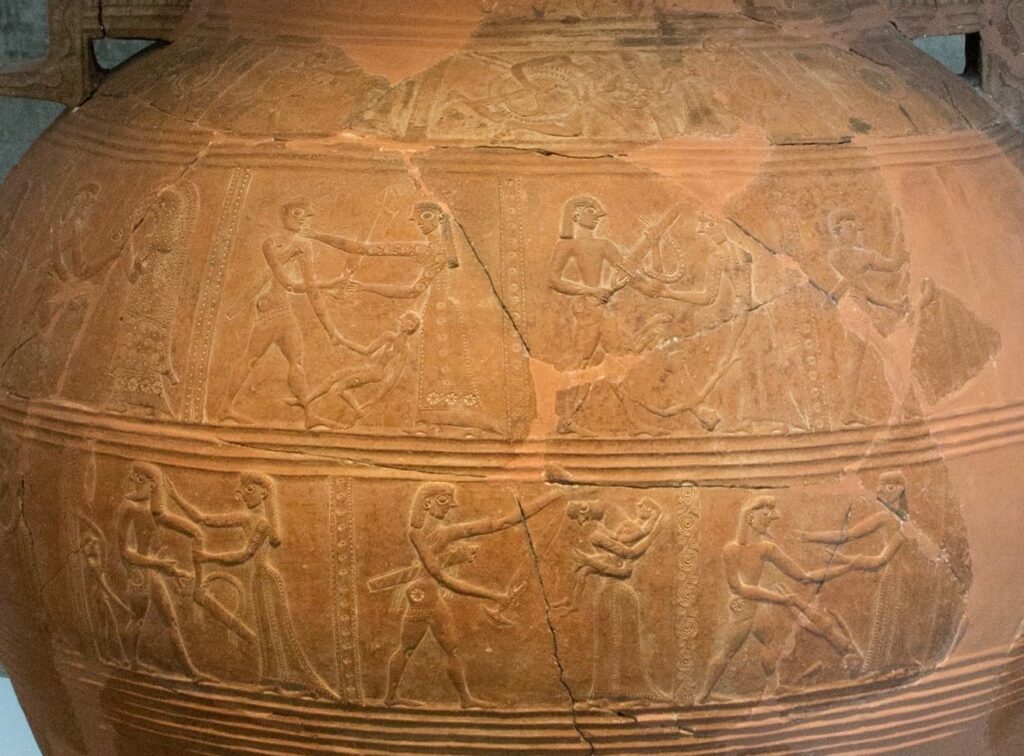Mykonos might readily bring to mind Super Paradise Beach and a debauched party scene, but the island’s real treasure is this enormous vase, extraordinary by every metric, most immediately visible being size at nearly 1.5 meters tall.
Dating to the 8th century B.C. the pithos is decorated entirely in relief, and what is shown is incredible. On the upper frieze, the earliest depiction of the Trojan horse is shown, with the wily Greek warriors shown peeking out from its wooden belly preparing to ambush the sleeping city.




Below are a series of vignettes, (photos 2-5) some of the most heart wrenching in all of ancient art. They show the cruel destruction of Troy, with warriors attacking the Trojan women, some who try in vain to protect their young children (Hektor and Andromache’s young son was famously killed by being hurled off of the city’s battlements) and others who veil themselves as they are led away to lives of certain slavery.
This all predates the eventual codification of Homer’s Iliad by centuries, and by even more Euripides’ tragedy The Trojan Women (if you haven’t read it, do! Or almost as good, watch the movie with young Vanessa Redgrave…)
Euripides has Priam’s queen Hecuba mourn:
‘I am led captive
from my house, an old, unhappy woman,
like my city ruined and pitiful.
Come then, sad wives of the Trojans
whose spears were bronze,
their daughters, brides of disaster,
let us mourn the smoke of Ilium.”
An episode that must have made a strong impact on Greek consciousness – a powerful reminder of the fate of conquered cities, maybe eventually conveying a certain ambivalence about Homer’s heroes…




